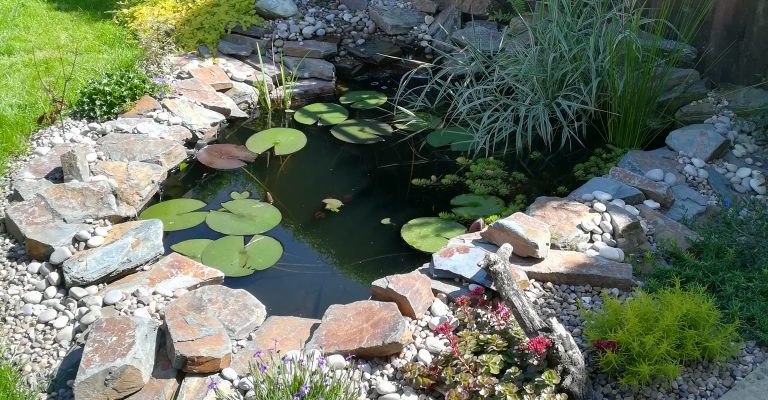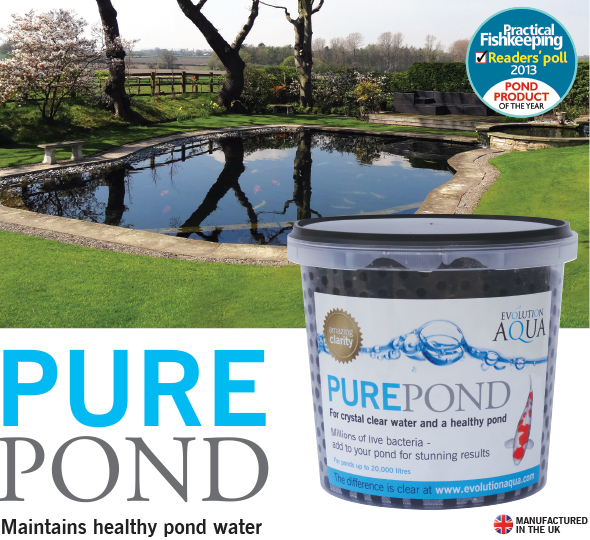
An Ode to the Humble Wildlife Pond: How To Set Up And What To Expect.
Wild Life Ponds are great, they really are. As a kid, I loved pond dipping with a trusty net and bucket and discovering the many critters just below the surface, a whole world within a world of the great outdoors. Now I’m a mum, I see my daughter gasp at wrigley tadpoles and Ramshorn snails. Nostalgia swells up, and I ponder how a love of water can transcend the generations with the rigidity of a bridge, a bridge created by something so fluid.
Not only do wild life ponds look brilliant – with vibrant gemstone colours of emerald or sapphire alluding to the many natural wonders beneath – a thriving pond is a conversation starter and a defining feature in your garden. It’s also not dramatic to say that a pond is a cornerstone in conservation. Humans have decimated wetlands, so any and all bodies of water can help to reclaim the wildlife lost to this destruction.
Have you got a space, big or small, you think could harbour a pond? The good news is you don’t need much to get you started and they can be as extravagant or as humble as you like. If you’ve got the budget, you can go wild, but there’s plenty of ways to get creative if you want to be modest with money or space is tight. Whatever you end up installing will benefit the environment – even if it becomes little more than a bird bath!

What you’ll need to build a wild life pond:
Initially, you’ll need a shovel, and a container or flexible liner and you’re good to go! Even an old kitchen sink or plant pot can be repurposed into a small wildlife haven. Preformed ponds are expensive but hardy, different types of liners are available and have the advantage that they fit more irregular shapes – which look more natural. Underlays should be used to protect the liner from sharp edges.
Placement:
Once you’ve established whether you’re using a PVC/EPDM liner or something premoulded, you can start to think about where you want it. Ideally, dig the ground in autumn when the earth shouldn’t be too wet or too dry. If possible, you want a protected, sunny spot, with minimal leaf litter on level ground. As you dig, leave shallow shelves that you can plant later, you’re also best digging a ‘trench’ around the outside for the liner to trail into. But honestly, even a large, lined plant pot with basic aquatic equipment on a balcony can suffice for wildlife!
Next, sink your container. If you’re not going to sink it, you’ll need to create some sort of ramp, using rocks or logs, so that wildlife can get in and out.
If you’re using a liner, lay it in the hole. Don’t worry about it being haphazard or cutting it to size, as it fills, the weight of the water will pull it into shape. As it fills you can pull the liner to reduce creases. Add rocks, or pebbles, whatever takes your fancy to the bottom. The next step may require a little patience. Use rainwater to fill and top up your pond if available (a great excuse to install a water butt!). Tap water has chlorine in it and in some area also much higher nitrate levels, which can have an adverse effect on wildlife. You can use a tap safe product to remove chlorine from tap water to make it safe for wildlife and fish.
Once your wildlife pond is filled, cut the liner leaving a border of at least 30cm around the outside. Fill in the trench you dug earlier, covering the excess liner. This can then be turfed, or disguised with an attractive rock arrangement. Rocks also provide shelter for visiting critters.
Planting A Wild Life Pond:
It is best to plant into special pond baskets with gravel in to help keep plants contained and allow for easy removal for trimming if needed. Depending on the size of your pond, you may only need a couple. If it’s on the mini side, try a few of these beauties:
- Miniature waterlily (Nymphaea “Pygmaea Helvola”)
- Tiny leaves and off-white flowers which will attract bees and butterflies, they don’t appreciate splashing water so keep them away from water features if possible.
- Lesser spearwort (Ranunculus flammula)
- Shallow marginal with beautiful yellow flowers that’ll span the whole of summer.
- Starwort (Callitriche stagnalis)
- Delicate. A prolific grower that thrives in the cooler months.
- A larger pond can have up to 4 plantable ‘zones’. These are where your dug out ‘shelves’ come into play. For the best ecosystem, try and plant each zone if you can.
- The deepest areas of your pond require plants that like to be totally submerged. Oxygenating plants include:
- Shining Pondweed (Potamogeton lucens)
- Water Starwort (Callitriche stagnalis)
- Fennel Pondweed (Potamogeton)
- The next zone is also in deeper waters, but the plants are submerged with floating leaves.
- These include:
- Water Crowfoot (Ranunculus aquatilis)
- Bladderwort (Urticularia)
- Curled Pondweed (Potamogeton)
- Next we have Emergent plants. These have stiff stems and are rooted:
- Flowering Rush (Butomus umbellatus)
- Arrowhead (Sagittaria aquatilis)
- Marsh Cinquefoil (Potentilla palustris)
- Stinking Iris (Iris foetidissima)
- Water Mint (Mentha aquatica)
- And finally, we have Marginals, that grow at the edge or in boggy areas:
- Lady’s Smock (Cardamine pratensis)
- Meadowsweet (Filipendula ulmaria)
- Brooklime (Veronica beccabunga)
- Soft Rush (Juncus effusus)
- Gipsywort (Lycopus europaeus)
- Bungle (Ajuga reptans)
- Great Willowherb (Epilobium hirsutum)
Filtration:
Even a small wild life pond will benefit immensely from filtration. But if it’s solely for wildlife, there’s no fish and it’s well planted you can get away without any. For a thriving pond, inspiring wildlife, clear water and fish stock, you’ll need a pump and filter as a minimum requirement.
That leads us nicely to pumps. Pumps are the backbone of a healthy pond, they move the water and stop it becoming stagnant. They are also an integral part of any water feature you may wish to install. Pumps and filters have separate jobs, but are the perfect marriage within a successful pond set up. Thinking about the vision you have, or the pond capacity you’ve got, have a browse of the pumps we have to offer.
A biological filter contains bacteria that break down toxins created by physical waste, be that from fish or other organic matter. These good bacteria break down Ammonia into Nitrite, another type of helpful bacteria then breaks the Nitrite down into Nitrate, which is subsequently absorbed by your pond plants. Be advised that good bacteria take awhile to colonise your filter, taking up to 6 weeks. If you already have fish, keep feeding to a minimum while this process takes place. Taking into account the size and stock of your pond, take a look at some of our filters.
Sometimes combined with filters, or bought as a separate entity, we have UV units, which can eliminate green water and also reduce harmful bacteria in your pond.
Over time, your pond will mature and wildlife will take up permanent residence, or grace you, depending on the type of wildlife and the season. You can expect dragonflies, bathing birds, newts and frogs as well as much, much more. If your pond is in a state of ecological balance, it shouldn’t require too much maintenance. Just keep an eye on encroaching vegetation and sediment buildup, if you have mechanical filtration, but sure to check it regularly and clean it as per the specific instructions for your product.
Got a pond that’s gone a bit wayward?
We can come to you and provide a revamp or maintenance, just follow the link below for more information: